Then i browsed in Google images as ER Diagram i got both types of
images... I dont know the similarities and difference between both
diagrams..
Can u please help me to understand in detail and to move further...
Thanks in Advance...
By developing databases, a DBA (or someone else) can use a Data Modeling technique known as Entity-Relationship Diagram.
This technique (as mentioned in other answers) was developed by an American (?) named Peter Chen and it is widely used today for the development of database structures such as tables and present relations between them.
The first image shown represents a Conceptual Model of a due problem/situation. The second image is a Physical Model of a problem/situation. Both models are part of the whole concept of data modeling by Peter Chen, the Entity-Relationship Diagram.
They (the models) represent stages in the course of a problem/situation. As you get a description of the problem/situation, you begin to develop the Conceptual Model of it. Once ready, the model is decomposed to become a new model called the Logical Model.
The Logical Model is also subsequently decomposed, resulting in the Physical Model, a final representation of the structures of the tables of a database containing the field names, their data types, relationships between tables, primary keys, foreign keys , and so on.
The decomposition process follows strict rules proposed by Peter Chen. This says that you do not draw nonsense. You make a model and need to follow rules to break it down so that you pass to the next stage.
You can see the Entity-Relationship Diagram as a tool or technique that helps you to develop a strong and concise database structure. With this technique, you can create a Model (3 actually) expressing business rules needed in a system/web application. However, remember the following things:
- Even before the existence of the Conceptual Model, we have to
describe the problem (the needs of business rules) on a paper (or a
document). It is here that you will generate/start a Conceptual
Model. This document may even be a new phase, prior to the Conceptual
Model, called Descriptive Model (this is not official by Peter Chen).
That's where you will have the context of everything.
- The context should be given only for what should be persisted (in a
database). There is no need to describe things that are not
persisted. Your Descriptive Model should not contain unnecessary
things.
- During the development of the Conceptual Model, it is crucial that
you forget completely what are tables and foreign keys. These things
will only slow you down during this phase of development. They should
be seen later, during the next stages.
I advise you to find out more about the Entity-Relationship Model (A.K.A. Entity-Relationship Diagram), and study about it. There are cool books on the subject, and a lot of material on the Internet. Having grasped this, believe me, the development of databases will become something much easier and enjoyable.
If you have major questions, please make a comment and I will answer. Come join the community. Follow the entity-relationship tag. There are many interesting questions that can help you in your studies. Also, keep asking, keep participating. We are here to exchange knowledge!
Oh, one more thing. There are certain different notations used by different professionals. For example, some people represents cardinalities as N...1, as other N-1, other as (N,1). These characteristics do not change the end result.
EDIT
I thank who showed me this.


